2014-02-26 05:42:45
Afra Anjum
I remember travelling on ferries as far as my memories take me back, dipping my feet in the cold river water while 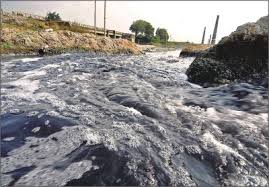 we waited for the ferries to arrive at the dock. Now, getting near the river would mean closing the windows of the car and of course looking away from the river which had once been considered the beauty of Bangladesh. Along with the polluted Padma, Meghna and Jamuna, the beauty of which used to be mentioned in numerous poems and songs; there are other rivers, ponds and lakes that are slowly inching towards similar demise. The numerous reasons of the pollutions of the rivers, lakes and ponds may be the frequent dumping of organic wastes (faeces, kitchen waste) and recyclable wastes such as plastic bottles, packets, etc which remain in the water for far too long before being recycled. Because of such materials being non-degradable, they cannot be broken down, hence they are clogging our waterways, damaging marine ecosystems, and entering the marine food web.
we waited for the ferries to arrive at the dock. Now, getting near the river would mean closing the windows of the car and of course looking away from the river which had once been considered the beauty of Bangladesh. Along with the polluted Padma, Meghna and Jamuna, the beauty of which used to be mentioned in numerous poems and songs; there are other rivers, ponds and lakes that are slowly inching towards similar demise. The numerous reasons of the pollutions of the rivers, lakes and ponds may be the frequent dumping of organic wastes (faeces, kitchen waste) and recyclable wastes such as plastic bottles, packets, etc which remain in the water for far too long before being recycled. Because of such materials being non-degradable, they cannot be broken down, hence they are clogging our waterways, damaging marine ecosystems, and entering the marine food web.
The organic waste leaves foul odour and stench and becomes unbearable for the people living around the water-bodies. The question remains – is there any hope of reviving the beauty of the rivers? The result of which is the careless actions of the citizens that led us to a path of an escalating degradation resulting in disruption of the balance of nature. As the proverb goes, “No problem arises without a solution”, the solution to these problems is now a reality, based on the smallest known life form – microbes. 25 years back, a Japanese horticulturist, Dr Tereo Higa came across the regenerative path of recovery which was as a result of a symbiotic relationship between certain microbes. The simple yet revolutionary technique, known as the EM technology (Effective Microorganisms), is comprised of a variety of effective, beneficial and non-pathogenic micro-organisms, and these small living organisms are not chemically synthesized or genetically engineered. EM is a natural probiotic, pro-life technology that has been stably developed and has a capability of increasing 50% of plant treatment and up to 90% reduction in toxic gases and odours. The heroes of this technology are very common microbes and are usually found in the food we consume. For instance, cheese (Lactobacillus bacteria), bread (yeast-Saccharomyces cerevisiae), beer (Saccharomyces cerevisiae) and also used in the preservation of food, etc. 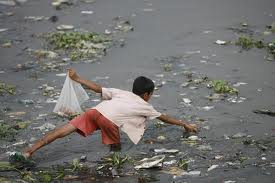
The effective microorganisms may be in liquid culture or in solid soil, as the soil provides the appropriate nutrients for growth. The most common form of using it is to make it into mud balls and then throwing it into polluted rivers. This technology has been in Japan, Pakistan, US, numerous other countries and by the UNICEF in Uganda for stench elimination and sludge reduction in latrines and has also proved effective. Currently, EM technology is associated with government projects for cleaning up in many countries.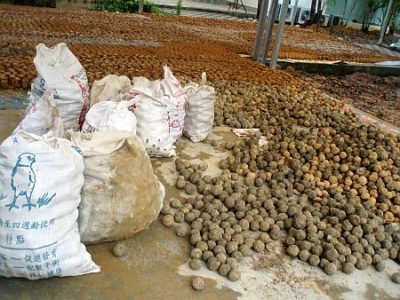
The secret of this technology is the Lactic acid bacteria: Lactobacillus casei, Photosynthetic bacteria: Rhodopseudomonas palustris, Yeast: Saccharomyces cerevisiae and many other beneficial microorganisms that exist naturally in the environment and may thrive in the mixture. One might ask how these small forms of life can do so much cleaning. The answer lies in their biochemical properties. For instance, the Photosynthetic (phototrophic) bacteria use the sun as the source of energy and to synthesize amino acids, nucleic acids, bioactive substances and sugars, from substances secreted by roots of plants which the plants cannot synthesize. So the bacteria are providing nutrients for plants and themselves in return for shelter and raw materials. This type of mutualistic relationship is known as symbiosis. This proves that EM can be used by microbes so that the efficiency of uptake of minerals and nutrients may increase.
Lactic acid bacteria (also known as “The yoghurt bacteria”), produces lactic acid from sugars. These bacteria can suppress harmful micro-organisms from growing and increasing rapid decomposition of organic matter. Moreover, lactic acid bacteria enhance the breakdown of organic matter such as lignin and cellulose and ferment these materials which normally take plenty of time.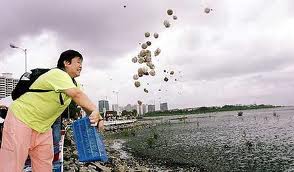
Fermenting Fungi decompose organic matter rapidly to produce alcohol, esters and antimicrobial substances such as Aspergillus and Penicillium. These suppress odours and prevent infestation of harmful insects and maggots.
Yeasts, which we commonly use in our bread, synthesize antimicrobial and useful substances for plant growth from amino acids and sugars secreted by photosynthetic bacteria, organic matter and plant roots. Bioactive substances such as hormones and enzymes produced by yeasts promote active cell and root division. Their secretions are useful substrates for effective microorganisms such as lactic acid bacteria and Actinomycetes.
Actinomycetes are the structure of which is intermediate to that of bacteria and fungi, produces antimicrobial substances from amino acids secreted by photosynthetic bacteria and organic matter. These antimicrobial substances suppress harmful fungi and bacteria. Actinomycetes can coexist with photosynthetic bacteria. Thus, both species enhance the quality of the soil environment, by increasing the antimicrobial activity of the soil.
As mentioned earlier, the soil is a natural reservoir of many microbes, but the presence of the “good” microbes reduces the chance of “bad” microbes, hence the reduction of pollution. EM mud balls break down sludge and silt in ponds, lakes, etc. by inhibiting the growth of algae leaving beautiful clear healthy water. Though doubts are raised on the transparency of scientific reasoning since the clear effect of the microbes is not fully understood. Also, this project has to be supervised regularly to control the number of mud balls used and for what duration. The time of fixation and the number of mud balls would depend directly on the size of the water body. But, with a lot to lose and no better natural technique in our hands, EM technology seems to be the best option and should be rooted for.
EM mudball has proved its use worldwide and in various sectors. To shorten the long list, the milestones in the water treatments are highlighted. For instance, according to Deputy Mayor Mr, Koji Yamawaki, toxic sludges were removed in Japan’s Hiroshima Utsumi canal, within months. In Iwaki City, Fukushima E.coli (pathogen), colony counts greatly decreased with the use of EM mudballs. Cassava wastewater in Nanning City and Lake Weishan which was heavily polluted by paper mill pollution, both projects in China treated with EM technology and results were prolific. Gurney Drive coast in Penang, Malaysia had taken up the same treatment process and showed drastic changes in water quality. German government used EM to purify the toxic waters and prevent fungal growth in flooded buildings after the Elbe River flood disasters in 2002.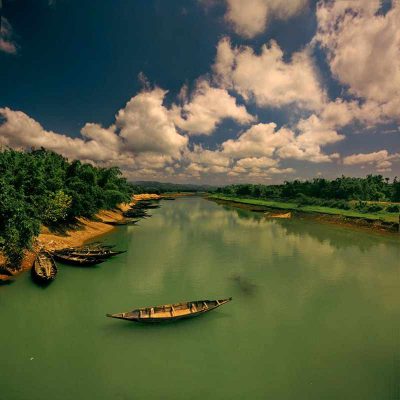
Massive awareness needs to be raised to support our cause so that we could reach our policymakers and get this technology applied firstly with small lakes, for instance, Gulshan Lake. Training programs need to be organized to clear the procedure and the amount of EM mud balls that need to be thrown. When we have such a simple, yet remarkable technology, we need to give it a shot. Dr Tereo Higa said, “It would be no exaggeration to say here, that the scope of potential applications of EM technology appears to be limitless.” Dr Higa embedded a seed of hope to save our country and as the great Aristotle said: “Hope is the dream of a waking man.” I am awake, and I hope to get our rivers, ponds and lakes back and be called a citizen of “The land of Rivers”. Wouldn’t you?
Photos: Taken from Internet


